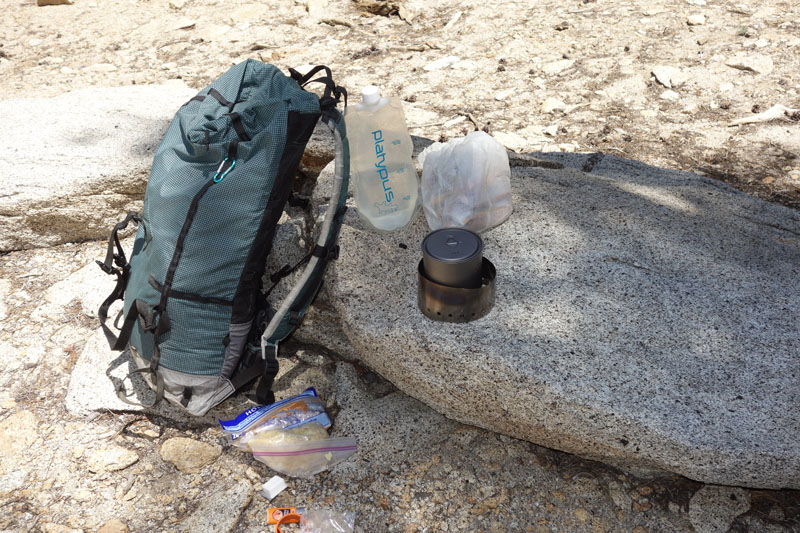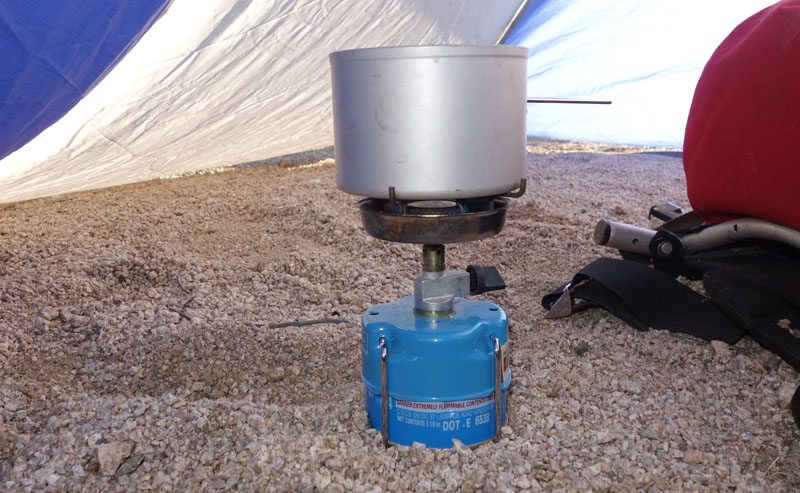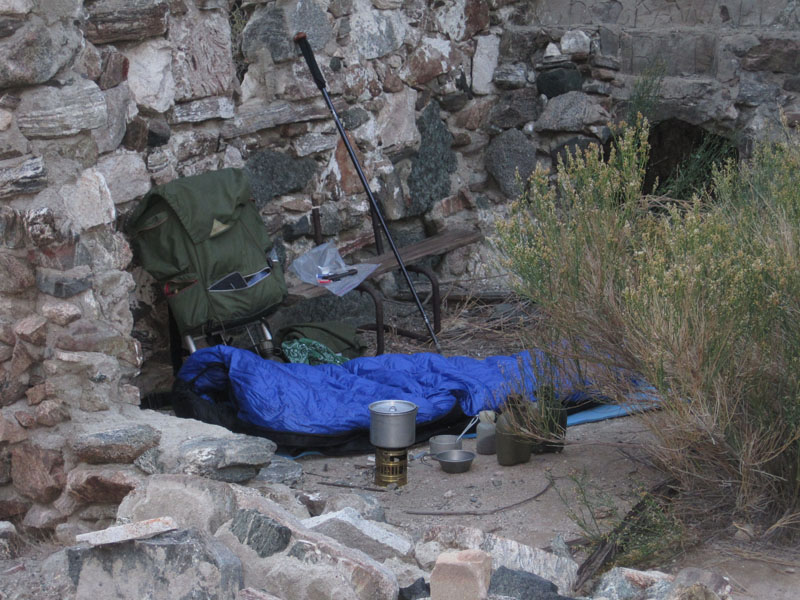JUST GO TO THE MANY BLOGS AND WEBSITES OF BACKPACKING EXPERTS AND FOLLOW THEIR EXAMPLE
Okay, it is a pet peeve of mine.

– Howard Beale (played by Peter Finch, from the movie Network)
Yesterday I was reading a review of a wood stove on a well known backpacking blog and I notice about 6 inches of leaves and brush have been cleared from around the base of the stove.
Only problem is, the flames from the stove extend a few inches above the pot, which is sitting on top of a wood burning inferno of a stove. The entire assembly height is at least twice the width of the cleared area. Knock the stove over and you have a forest fire.
This got me to thinking about stove safety and I did a Google search for backpacking stoves to see how safe the authors were about stove placement. Disappointing. I even visited a stove review and saw a wood burning stove in action, and a few small pieces of ground cover NEXT to the stove were burning!!
More often than not, I see backpacking stove articles and reviews with this kind of set up: stoves sitting on top of forest duff or much too close to combustible materials.
Actually to be honest and fair only one person consistently shows stoves being used in a safe manner when it comes to proper location of stoves most of the time. That is Hikin’ Jim’s blog, Adventures in Stoving.
In his article named, Fire Safety – Alcohol vs. ESBIT?, Jim points out that most of the National Forests require that backpacking stoves should only be placed on a flat area where a 10 foot diameter area has been cleared of all brush. Jim also mentions that this might be overkill for some stoves, and that it may be a little over-zealous when we are trying to be LNT (leave no trace) hikers and campers – good point.
I will say that with a little careful preparation we can clear an area and then restore it. Better yet, keep an eye out for a good location to cook your meal when hiking; it does not need to be at your final campsite – you can stop and cook before you stop for the day.
STOVE SAFETY
My post here is not a comprehensive article about stove safety. But if you use a backpacking stove, it is your responsibility to follow the manufacturer’s instructions for safe operation of the stove, and to perform the recommended scheduled inspections and maintenance. It is also your responsibility to locate and operate the stove in a safe manner. Given that,
I really don’t care if you don’t follow instructions and set yourself on fire, injure yourself from an explosion, or die from carbon monoxide poisoning.
I do care if you set the forest on fire.
I looked at many of the popular backpacking websites and blogs to view stove articles, especially comments about stove safety. Only Jim talks about a clear, flat, and stable place to set up your stove.
AUTHOR RESPONSIBILITY
If you pass yourself off as an expert, then talk about the safe placement of stoves. If you show pictures of your stove in action and it is not safely placed, then tell the reader why. If you are “staging” the picture, tell the reader. I have even pointed out to writers that their stove is not safe and the typical response I get is, “Oh it was wet ground, I would never do that in summer.” My retort is that hikers should develop a set of standard operating procedures so they become habit.
If you are reading this and happen to be one of those so called expert stove reviewers, go back to your articles and inspect the pictures you published. If any are not safe, re-write the article or insert new pictures showing safe operation.
STOVE TYPES
There are many types of backpacking stoves and fuels. Several are potentially more dangerous than others. Alcohol stoves are at the top of my list. In daylight you cannot see the flame and it is easy to tip some of them over and the alcohol will flow on the ground. Tall stoves such as those mounted to the top of a canister, many wood burners, and liquid stoves with an integrated fuel tank can be easily tipped over. When you place your stove, just assume you might knock it over and take a close look at the stove location to determine what might happen if you do tip it over.
ANGER
Okay, I am peeved about the subject and this is my rant. My first gut reaction is to post pictures of the offenders. But that isn’t my style. It is the responsibility of hikers and campers to find out what is safe. It is also the responsibility of anyone who poses as a stove expert to discuss the subject.
MY PICTURES
I went back to see if I was guilty of posting unsafe stove pictures. Looks like my standard operating procedure is good.
You may say, “Oh Nick, you mostly hike in the desert so you don’t have to worry.” Not true, I hike all over the country and spend a lot of time in the mountains of California. You would have to be a hermit not to know about the fire danger here. But no matter where I hike, I make sure my stove is in a safe place.
Above: This was taken in the San Jacinto Mountains where fire is a serious danger. The stove uses the solid fuel, Esbit, which is pretty darn difficult to tip over. Notice that the stove is on a flat boulder, and even if I knocked it off the boulder, the area below it has no combustible materials.
Alcohol Stoves
The only alcohol stove I use is the Trail Designs 12-10 stove (see below). What I like about this stove is the flat base at the bottom, which makes it difficult to tip over.
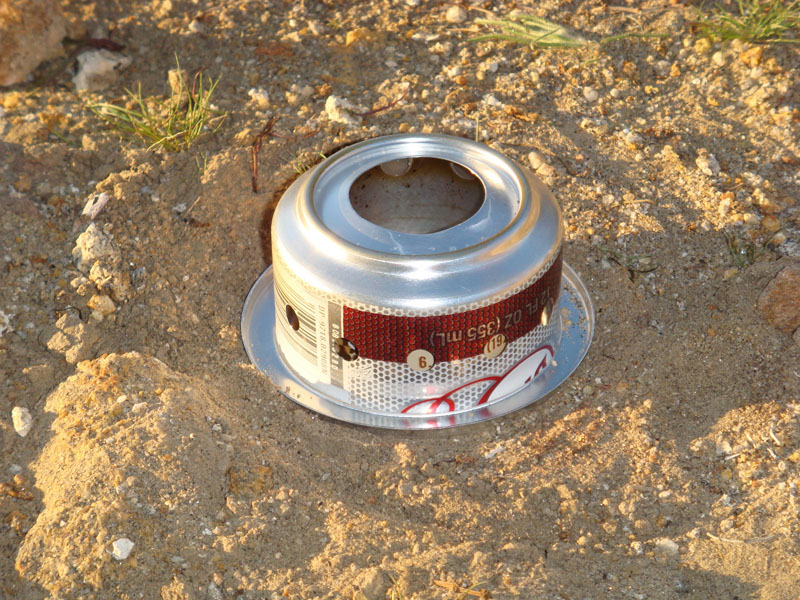
I especially like the Trail Designs Caldera Cone, which creates a very secure stand for the cook pot and a windscreen to keep flames inside. The picture below is a Caldera Cone placed on top of a 12-10 Trail Designs stove.
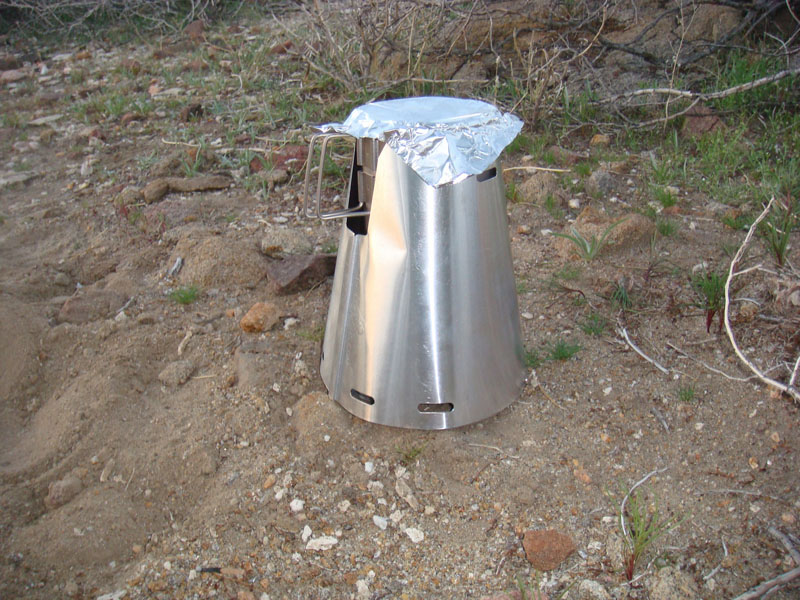

Top Mounted Canister Stoves
These have been around for decades and can easily be tipped over. Below is one of the early models from the late 70’s or early 80’s, a Gaz Globe Trotter. I am cooking inside of my shelter, which is well ventilated to prevent carbon monoxide poisoning. Also there is nothing close by to catch fire.
Liquid Gas Stoves
These stoves with an integrated fuel tank are not popular any more. But you can still buy them. Below is my all time favorite stove, the Svea 123. It is heavy by today’s standards, but I still like to take it on the occasional trip.
OTHER CONSIDERATIONS
Whenever possible, I camp out under the stars and leave the shelter in my backpack. And I enjoy eating meals while nice and warm in my sleeping bag and quilt; ESPECIALLY breakfast. This requires that a proper safe location is picked to spend the night.
